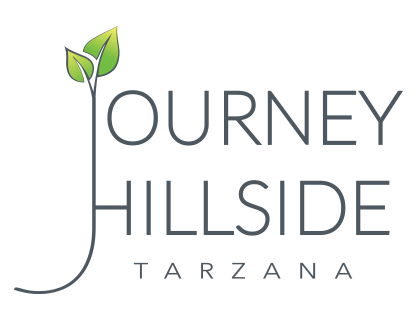Coping With Alcohol Cravings: Understanding Triggers and Finding Balance
Published on: January 3, 2022 | Updated on: December 3, 2025
Cravings to drink can appear when you least expect them — in moments of stress, celebration, or quiet loneliness. For people in early recovery, these urges can feel overwhelming. But cravings don’t mean failure; they’re a normal part of healing as the brain and body adjust to life without alcohol.
At Journey Hillside Tarzana, our clinicians help clients learn how to recognize cravings, understand what fuels them, and practice strategies that bring long-term relief. For many, that starts with a structured alcohol addiction treatment program where medical support and therapy combine to build emotional stability and resilience.
Why Cravings Happen
Alcohol cravings are rooted in chemistry and habit. Over time, drinking alters dopamine pathways — the brain’s reward system — making alcohol feel like the fastest route to comfort or relief. When you stop drinking, those pathways don’t instantly reset, which can lead to powerful urges.
External cues such as bars, stress, or social settings can reignite these associations. Internal triggers — boredom, anxiety, fatigue, or emotional pain — often create the same pull. Understanding why cravings happen helps reduce shame and encourages compassion for yourself during recovery.
If you find yourself turning to alcohol to soothe stress or emotional pain, our article on self-medicating with alcohol explains how underlying mental health conditions can drive the cycle of use and relapse.
Recognizing the Early Signs of a Relapse Pattern
Cravings rarely appear in isolation. They’re often accompanied by subtle emotional changes — irritability, restlessness, or idealizing past drinking. These are early signs that your recovery system needs extra support.
Our clinical team encourages journaling and mindfulness to identify shifts in mood or thought patterns before they spiral into relapse. Recognizing those warning signs early is a key theme in Identifying Alcohol Use Disorder — understanding how symptoms evolve is the first step to reclaiming control.
How to Cope With Alcohol Cravings
- Ground yourself in the moment.
Simple breathing exercises, a brief walk, or talking to someone you trust can interrupt the craving cycle. The urge to drink peaks and passes; it’s a wave, not a command. - Shift your environment.
If a craving hits, move to a new space — call a friend, step outside, or start a different activity. Even small changes can break the chain of habit cues. - Challenge the craving with truth.
Remind yourself what happens after drinking: the regret, the anxiety, or the physical exhaustion that follows. Reframing helps the brain override the “false reward” signal that alcohol once provided. - Practice self-care, not self-punishment.
Eating balanced meals, staying hydrated, and getting enough rest reduce the biological stress that fuels cravings. These acts signal safety to your nervous system and strengthen long-term recovery. - Seek support when emotions are heavy.
Therapy is not only for crisis moments — it’s a tool for prevention. Our clinicians often explore how stress, trauma, or unresolved grief intensifies cravings. Understanding that connection, as discussed in Trauma and Alcoholism, helps people heal the deeper causes of addiction, not just the symptoms.
Building Long-Term Resilience
Cravings typically become less frequent as recovery progresses, but they can resurface under stress. That’s why ongoing care matters. At Journey Hillside Tarzana, our residential and aftercare programs combine evidence-based therapies with holistic modalities — meditation, sound healing, yoga, and physical fitness — to build the self-regulation skills that last beyond treatment.
By learning to pause, reflect, and reach out before reacting, you replace old coping patterns with self-trust and connection.
A Compassionate Path Forward
If you’re struggling with cravings or fear relapse, you’re not alone. Recovery is not about perfection; it’s about progress, honesty, and support.
Our admissions team offers confidential guidance on how to begin treatment, verify coverage, and create a personalized plan that fits your goals.
Start today by verifying your insurance — our staff will walk you through options and help you take the first step toward freedom and stability.
Frequently Asked Questions About Alcohol Cravings
Do alcohol cravings ever go away?
For most people, cravings become less intense and less frequent as the brain heals from alcohol dependence. Over time, new coping strategies and balanced brain chemistry reduce the power of those urges. Ongoing therapy and aftercare support help keep them manageable.
What triggers alcohol cravings the most?
Common triggers include stress, fatigue, loneliness, and emotional pain — but even positive emotions like excitement can spark the urge to drink. Recognizing these triggers early and practicing mindful interruption techniques greatly lowers relapse risk.
How long do alcohol cravings last after quitting?
Physical cravings often fade within the first few weeks of sobriety, but psychological urges may linger for several months. Structured therapy and healthy routines shorten this period and make coping easier.
What’s the best way to handle a craving in the moment?
Pause and ground yourself — breathe deeply, step outside, or call someone you trust. Cravings peak and then pass like a wave. Replace the urge with a self-care action: hydrate, move, or talk about the feeling instead of reacting to it.
When should I seek professional help for alcohol cravings?
If cravings lead to relapse or interfere with daily life, it’s time to reach out for help. Programs like the alcohol addiction treatment services at Journey Hillside Tarzana provide safe, confidential care tailored to your needs.





